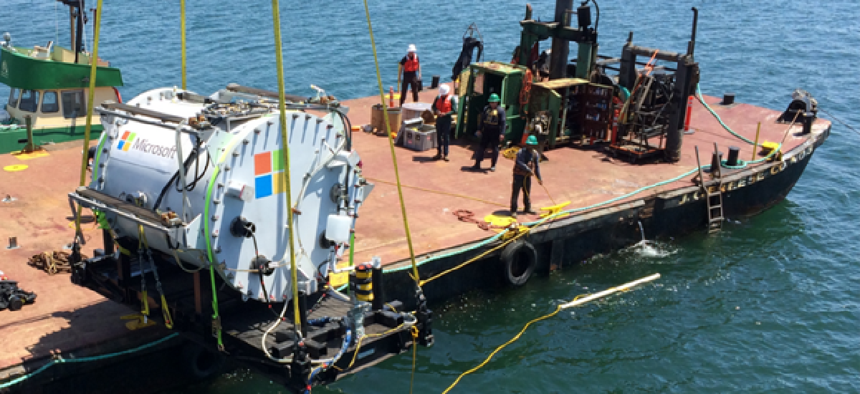Microsoft tests undersea data center pod


Connecting state and local government leaders
Project Natick reflects Microsoft’s pursuit of sustainable data center solutions that offer lower cooling costs and less latency.
Today’s data centers, which power cloud resources supporting business and government, house thousands of servers that generate immense amounts of heat. Cooling, in fact, is one of the biggest expenses.
In a recent experiment to reduce data center cooling costs, reduce latency by bringing the servers closer to population centers and increase overall sustainability, Microsoft Research has designed and tested an undersea data center. The year-long project known as Project Natick -- initially proposed by a Microsoft employee who served on a Navy submarine – successfully completed a 105-day test off the Pacific coast late last year.
Undersea data centers can serve about 50 percent of people who live within 200 kilometers from the ocean, Microsoft said in the project’s FAQ, explaining that deployment in the ocean offers “ready access to cooling, renewable power sources and a controlled environment.”
The data center is housed in a white steel tube, covered with heat exchangers. Inside is a single computing rack that was bathed in pressurized nitrogen to efficiently remove heat from computing chips while the system was being tested on the ocean floor, according to a report in the New York Times.
A Natick data center co-located with offshore renewable energy sources could be truly zero emission, and could last up to five years before being retrieved and reloaded with new computers, Microsoft said. The target lifespan is at least 20 years.
"No waste products, whether due to the power generation, computers or human maintainers, are emitted into the environment," a Microsoft spokesperson said, pointing out that the data center does not consume water for cooling or any other purpose. "Sea life in the local vicinity quickly adapted to the presence of the vessel."
The first Natick prototype, named Leona Philpot after a character in Microsoft’s Halo video game series, is now back at Microsoft headquarters in Redmond, Wash., for analysis and refitting.




